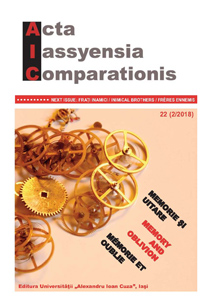Repenser le legs historique et culturel dans Garçon manqué de Nina Bouraoui
Rethinking the Historical and Cultural Legacy in Nina Bouraoui’s Garçon Manqué
Author(s): Bouna FayeSubject(s): Anthropology, Cultural history, Studies of Literature
Published by: Editura Universităţii »Alexandru Ioan Cuza« din Iaşi
Keywords: assertiveness; culture; heritage; history; hybridity; identity; autobio - graphy;
Summary/Abstract: The present approach to Garçon manqué (Tomboy in English) aims to reveal the identity crisis experienced by Nina Bouraoui, the author, narrator and protagonist of the novel, as well as the many racial problems she encountered during her youth. Born in a traditional environment, it was impossible for her to develop properly as she was constantly singled out and rejected by the community because of her dual cultural background. This ambiguous status, of which she is the perfect incarnation, derives from the burden represented by the double heritage – Algerian and French – which contains in itself the seed of conflict. In order to escape this heavy historical and cultural legacy and to live life to the fullest, the heroine disguises herself, de facto, as a boy – hence the term “tomboy”, which gave the title of the book. It is this travesty which explains, in many ways, the reasons for Nina’s marginalization and stigmatization in her father’s country, Islamic Algeria. On the other hand, in her mother’s country, France, Nina becomes victim of unchained racism, because of her paternal Maghrebian legacy.
Journal: Acta Iassyensia Comparationis
- Issue Year: 2/2018
- Issue No: 22
- Page Range: 141-148
- Page Count: 8
- Language: French

